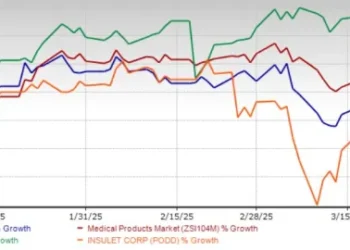Introduction: The Tariff Test Case No One Is Talking About
For all the attention given to tariffs on steel, aluminum, and semiconductors, one of the most disruptive trade proposals on the horizon has remained oddly underdiscussed: Donald Trump’s plan to impose sweeping tariffs on foreign-made pharmaceuticals. Framed as a populist push to bring drug manufacturing back to U.S. soil, the policy is gaining traction on the campaign trail—and raising alarms among economists, health policy experts, and pharmaceutical executives alike.
While the former president has not yet detailed a full plan, multiple sources close to his economic advisory circle confirm that the groundwork is being laid for a 10–20% blanket tariff on all pharmaceuticals imported from key trading partners, including China and India. These two countries, it should be noted, account for over 70% of the active pharmaceutical ingredients (APIs) used in U.S.-consumed drugs.
The rationale is politically intuitive: punish foreign competitors, reward domestic production, and make America less reliant on hostile supply chains. But beneath the surface, the implications are far murkier—and potentially more dangerous.
This is not just a trade issue. It is a test case in how globalized health economics, domestic populism, and national security concerns collide—with patients, as always, caught in the crossfire.
The Supply Chain We Forgot We Had
To understand how Trump’s pharma tariffs might land, we need to revisit how the modern pharmaceutical supply chain operates.
Unlike consumer electronics or automobiles, where parts may be assembled in one location and finished elsewhere, pharmaceutical manufacturing is largely decentralized and opaque. APIs—the raw chemical compounds that make drugs effective—are often produced in China and India due to lower environmental regulations and cheaper labor costs. From there, they are shipped to contract manufacturers, often in Europe or Puerto Rico, who formulate the final product. Only a fraction of these processes occur on U.S. soil.
This design wasn’t an accident. It was driven by decades of globalization, in which efficiency and cost-saving trumped domestic capacity. But the COVID-19 pandemic exposed just how brittle this system had become.
During the early days of the pandemic, U.S. hospitals saw shortages of common medications—anesthetics, antibiotics, even basic painkillers—not because the drugs were too expensive, but because they were stranded on ships or behind closed ports. Trump’s tariffs are, in part, a reaction to that vulnerability.
But they also risk weaponizing a problem that requires surgical precision—not political bluster.
The Economics of a Blunt Instrument
A 15% tariff on foreign pharmaceuticals may sound like a modest policy shift. But even small changes in upstream drug pricing can ripple across the healthcare system in disproportionate ways.
For starters, U.S. pharmaceutical companies often rely on foreign-produced APIs even when the final drug is branded “Made in America.” A blanket tariff would raise costs for manufacturers across the board—regardless of where the final pill is pressed.
Then there’s the issue of generics. Around 90% of prescriptions filled in the United States are generics, many of which are produced entirely overseas or with imported components. The generics market operates on razor-thin margins, and a tariff could either force suppliers to withdraw from the market or pass the costs onto consumers.
“You’re essentially taxing the cheapest drugs we have,” said Dr. Matthew Lang, a health economist at George Washington University. “And those are the drugs most Americans depend on daily.”
Insurers, pharmacy benefit managers, and Medicare administrators would face tough choices: absorb the increased cost, restrict formularies, or shift the burden to patients through higher copays.
Whichever path is chosen, the result could be the same: higher out-of-pocket costs and less access—especially for low-income and elderly populations.
National Security or Economic Nationalism?
Proponents of the tariffs argue that national security justifies the cost. They point to a 2020 report from the U.S.-China Economic and Security Review Commission that warned of America’s overdependence on foreign drug manufacturing, particularly in geopolitical flashpoints like China.
There is truth to this concern. China dominates the global supply of antibiotics and other critical medications. India, for its part, relies heavily on Chinese APIs. A strategic disruption in this chain—whether due to conflict, pandemic, or economic coercion—could leave the U.S. vulnerable.
Yet critics argue that tariffs are a clumsy way to address this problem. “Tariffs don’t build factories,” said Janet Kuo, an analyst with the Brookings Institution. “They just make existing products more expensive. If the goal is to re-shore production, then we need targeted subsidies, public-private partnerships, and FDA support for domestic startups—not taxes on patients.”
Moreover, there is no guarantee that domestic producers could ramp up quickly or cheaply. Drug manufacturing requires not only infrastructure but regulatory clearance, quality assurance, and skilled labor—none of which can be imported on short notice.
Political Chess Meets Policy Roulette
If the tariffs do move forward, expect the political battle to be fierce. Democrats will likely attack the policy as reckless and anti-consumer, while some Republicans—particularly those aligned with libertarian or pro-business wings—may resist on grounds of economic orthodoxy.
The pharmaceutical lobby, already bruised from years of price-control debates, is expected to mount a robust defense. But they may face an uphill battle in an election year where “bringing jobs home” remains a potent talking point.
As with many Trump-era economic policies, the goal may not be policy coherence but political messaging. “Tariffs are a way of drawing lines,” said political scientist Nora Greenberg. “You’re either with American workers or against them. That binary appeals to voters—even if the actual impact is far more complex.”
Preparing for the Impact
While the tariffs are not yet law, stakeholders across the healthcare spectrum should begin contingency planning now.
- Health systems should audit their drug inventories and assess vulnerability to foreign supply chain shocks.
- Policymakers should consider emergency authorization protocols or supply chain incentives to buffer critical drug access.
- Patients should be informed, not just alarmed. Transparency around potential price increases and generic availability will be crucial in the months ahead.
There is still time to shape the outcome. Congressional hearings are likely. International partners may seek exemptions or retaliate with their own tariffs. And perhaps most significantly, Trump’s return to power—if it happens at all—remains an open question.
But the broader lesson is already clear: Globalized healthcare comes with globalized risks. And when political solutions are crafted without systemic understanding, the costs are rarely paid by policymakers. They are paid by patients.















